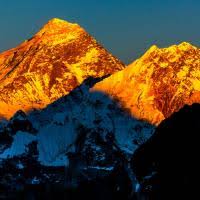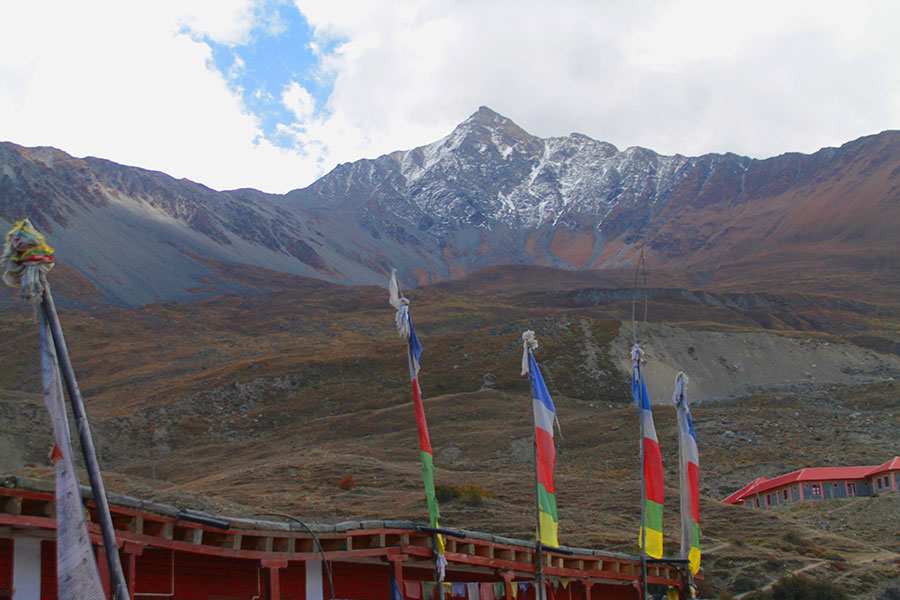Destinations :
Duration : 04 days / 03 nights
Tour Description:-
Mustang region lies in the western part of Nepal and is officially the name of the district having a Tibet like region. It is accessible by foot or by air. It is located along the banks of the Kali Gandaki river. It is divided into two parts namely the Upper Mustang and the Lower Mustang. Upper Mustang is largely inhabited by Manangi people and goes up to the ancient capital of Lo Manthang. Whereas Lower Mustang covers the part of lower valley along the Kali Gandaki river. Mustang is the only district in Nepal with its own King. The people of Mustang call themselves Lobas. Some beautiful architecture in this region include the city wall and the four storey palace in Lo Manthang
Day 01 - Fly Pokhara - Jomsom and trek to Kagbeni (3240m, 3 hours)

 Early morning transfer to Pokhara airport and fly to Jomsom (20 minutes flight). Explore Jomsom for few hours and After lunch, leave the path to Kagbeni by the Kaligandaki river. Dinner and overnight at Kagbeni.
Early morning transfer to Pokhara airport and fly to Jomsom (20 minutes flight). Explore Jomsom for few hours and After lunch, leave the path to Kagbeni by the Kaligandaki river. Dinner and overnight at Kagbeni.
Day 02 - Trek from Kagbeni to Muktinath(3812mtr., 6 hours walk)
 It is about 5 to 6 hours' gradual climb to Muktinath, an important pilgrimage spot for both Hindus and Buddhists - with a Buddhist Gompa and pagoda style temple dedicated to Lord Vishnu. The most interesting aspect of the area however is the spot where natural burning gas coming out from a rock situated at the same place as a small spring. Earth, fire and water - an important religious combination.
It is about 5 to 6 hours' gradual climb to Muktinath, an important pilgrimage spot for both Hindus and Buddhists - with a Buddhist Gompa and pagoda style temple dedicated to Lord Vishnu. The most interesting aspect of the area however is the spot where natural burning gas coming out from a rock situated at the same place as a small spring. Earth, fire and water - an important religious combination.
Day 03 -Trek down to Jomsom. 6 Hrs.
 The trail descends very quickly to the valley floor over 5,000 ft below and we reach Jomsom for lunch. Rest of the time is free to explore around the Jomsom. Overnight at Jomsom.
The trail descends very quickly to the valley floor over 5,000 ft below and we reach Jomsom for lunch. Rest of the time is free to explore around the Jomsom. Overnight at Jomsom.
Day 04 -Jomsom to Pokhara by flight. (20 minutes)
After breakfast walk to Jomsom airport to board the Pokhara flight. Upon arrival transfer to your hotel in Pokhara or fly to Kathmandu.
Muktinath-Chumig Gyatsa situated at 3750 meter along the Annapurna Circuit is a sacred place for both Hindus and Tibetan Buddhists. It is a great example of how two religions can share the same holy spot with mutual respect and support.
Enquiry
Print itinerary










 It is about 5 to 6 hours' gradual climb to Muktinath, an important pilgrimage spot for both Hindus and Buddhists - with a Buddhist Gompa and pagoda style temple dedicated to Lord Vishnu. The most interesting aspect of the area however is the spot where natural burning gas coming out from a rock situated at the same place as a small spring. Earth, fire and water - an important religious combination.
It is about 5 to 6 hours' gradual climb to Muktinath, an important pilgrimage spot for both Hindus and Buddhists - with a Buddhist Gompa and pagoda style temple dedicated to Lord Vishnu. The most interesting aspect of the area however is the spot where natural burning gas coming out from a rock situated at the same place as a small spring. Earth, fire and water - an important religious combination. The trail descends very quickly to the valley floor over 5,000 ft below and we reach Jomsom for lunch. Rest of the time is free to explore around the Jomsom. Overnight at Jomsom.
The trail descends very quickly to the valley floor over 5,000 ft below and we reach Jomsom for lunch. Rest of the time is free to explore around the Jomsom. Overnight at Jomsom.